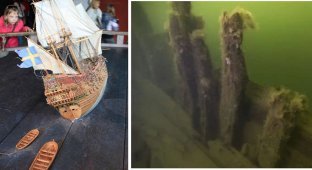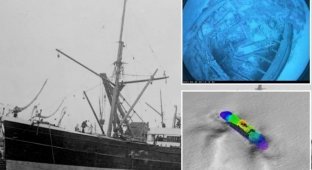3D view of Ernest Shackleton's ship: what the Endurance looked like at the time of its sinking (14 photos + 1 video)
15 October 2024
Its discovery 3,000 metres beneath the Antarctic ice in 2022 was nothing short of miraculous. Now stunning 3D scans are revealing Ernest Shackleton's ship, the Endurance, in a whole new way. A model created for a new National Geographic documentary shows what the ship looked like when it was trapped in ice in 1915. 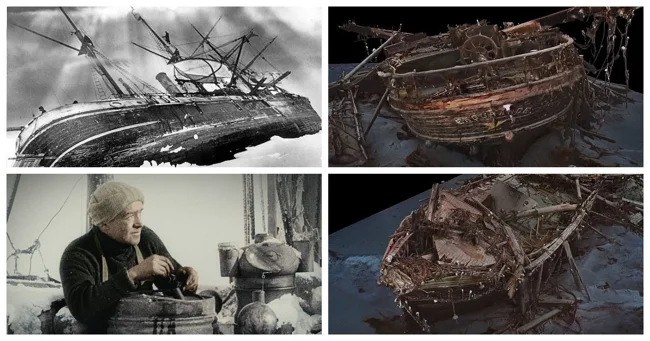
From the plates used for daily meals to the flare fired as a tribute to the sinking ship, scans reveal the finest details of life on board the Endurance.
Nico Vincent of Deep Ocean Search, the company that developed the scanning technology, said: "It's absolutely stunning. The wreck is almost intact, as if it had sunk yesterday."

Since the Endurance was discovered, images taken from the depths have only revealed small fragments of its 44-metre wooden hull. However, the new 3D scan uses images taken by remotely controlled robots. These images have been combined to create a digital twin of the sunken ship.
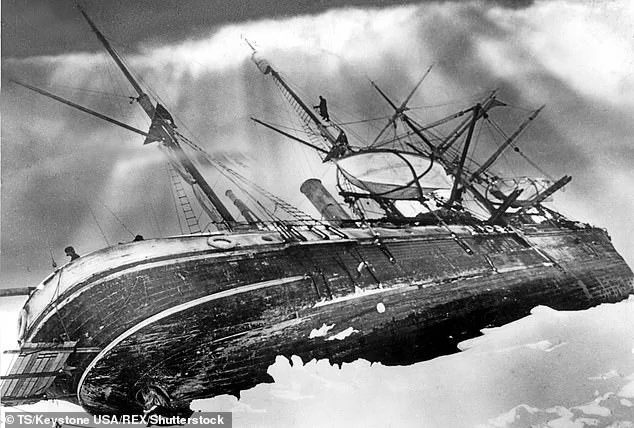
The Endurance sank in November 1915 after becoming trapped in sea ice off the coast of Antarctica. The wreck was lost for over 100 years until it was discovered in 2022.
Now that the murky waters are clear, details that were lost over a century ago can be seen. Thanks to the high resolution of the original images, the scans can now discern grooves in the sediment where the ship came to rest.
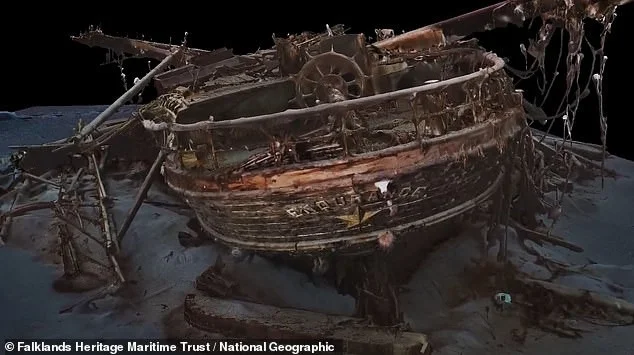
By combining 25,000 high-resolution images, the scan reveals details of the ship that were previously hidden in the murky waters, such as the 'Endurance' lettering near the helm.
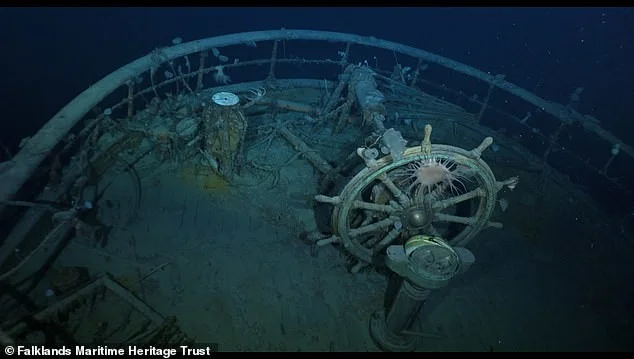
The Endurance's helm
These incredible images show the scattered dinner plates the crew used for their daily meals when they became trapped in the ice. In another photo, the researchers found an explorer's leather boot lying by the railing.
According to the expedition members, the boot may have belonged to Frank Wild, Shackleton's second mate. In one of the photos, a tiny detail of the ship's flare can be seen. Surprisingly, this is believed to be the flare that the crew mentions in their diaries, and which was fired by expedition officer Frank Hurley as the ship began to sink under the ice.

Ernest H. Shackleton (1874–1922) during the Imperial Trans-Antarctic Expedition, which sank the Endurance
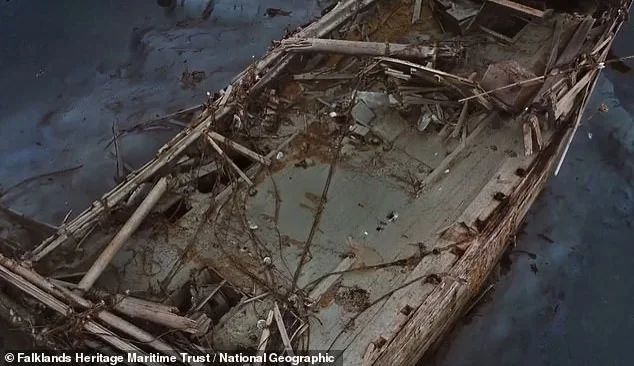
Debris scattered across the deck, including plates, a missing boot, and the flare gun used to bid farewell to the ship as it sank sank
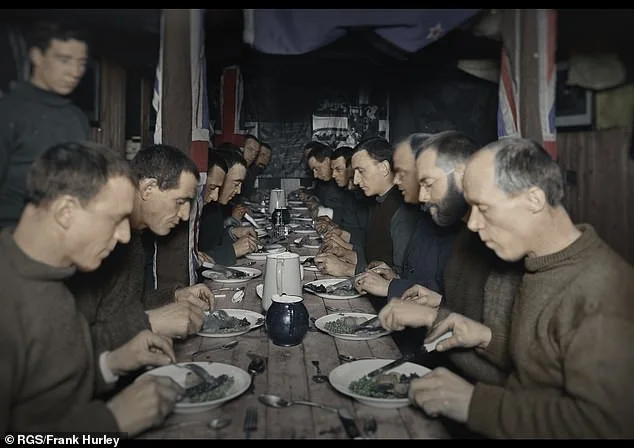
This photograph, taken by Frank Hurley, the expedition's photographer, shows the crew eating from the same plates that were scattered around the deck.
Dr John Shears, who led the expedition that found the Endurance, said: "Hurley got out a flare gun and fired it into the air with a powerful detonator as a mark of respect for the ship. He then noted in his diary that he would put it on the deck. And here we are."
Ernest Shackleton, the famous explorer, sailed aboard the Endurance as leader of the Imperial Trans-Antarctic Expedition. Its goal was to make the first land crossing of Antarctica, via the South Pole. However, just weeks after leaving South Georgia, the Endurance became trapped in ice, never reaching Antarctica.
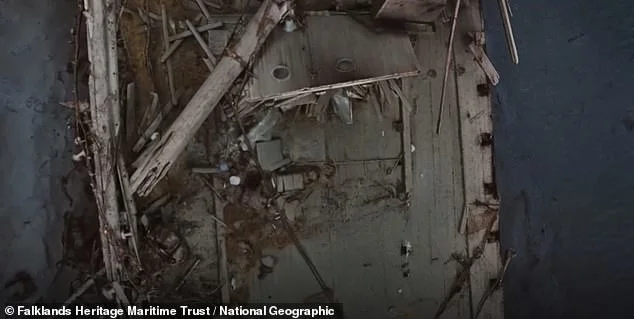
Scans show that the ice, with its crushing force, split the mast and damaged the deck planks.
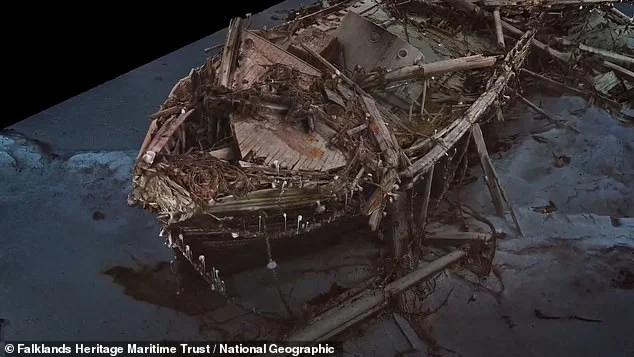
However, the researchers also found that the ship's hull was not badly damaged, despite being underwater for 100 years.
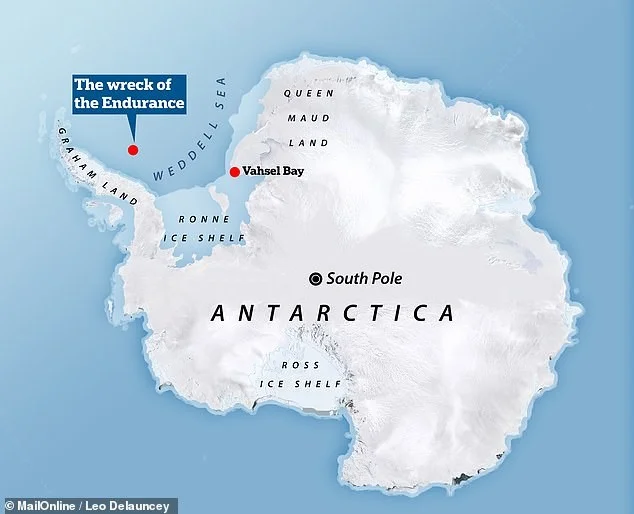
Endurance was one of two ships of the Imperial Trans-Antarctic Expedition of 1914-1917. The expedition's goal was to make the first overland crossing of Antarctica. Although the ship was scheduled to arrive at Vahsel Bay, it became trapped in ice and was dragged across the Weddell Sea until it was eventually broken up by the ice.
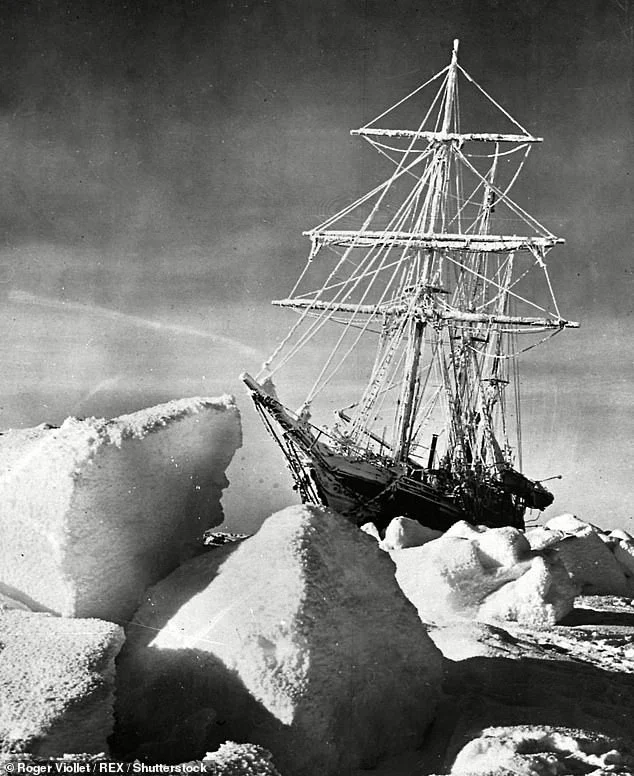
Due to its remote location and year-round ice cover, Endurance was considered one of the least accessible wrecks in the world.
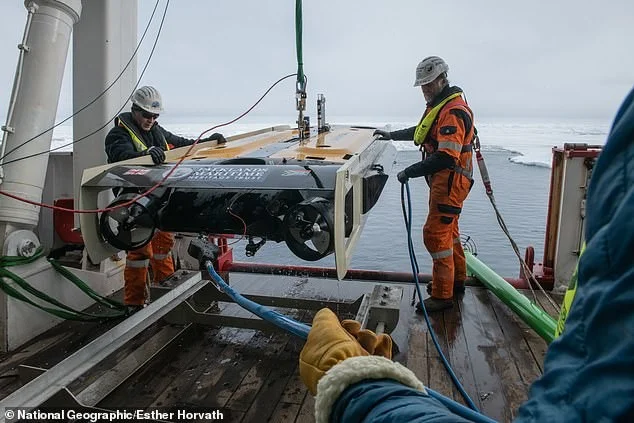
The ship was eventually discovered in 2022 by an expedition team using remotely operated vehicles to dive into the frozen waters.
After spending the entire Antarctic winter on the ship, Shackleton and his crew drifted in the ice for weeks before deciding to abandon the Endurance. On November 21, 1915, the sea ice finally caught and sank the ship, stranding 27 men.
Their journey across hundreds of miles of ice and 800 miles of open ocean to South Georgia will forever be remembered as one of the greatest moments of polar exploration. Thanks to Shackleton's leadership, all 27 crew members eventually returned home alive. Due to its remote location and year-round ice cover, the wreck is now one of the most inaccessible in the world.
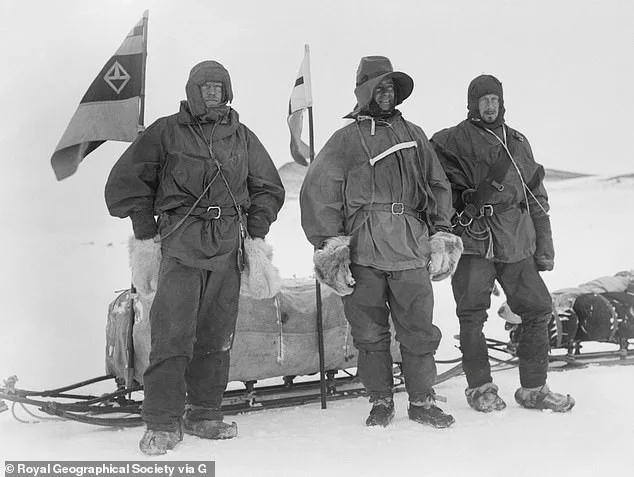
Shackleton, Wilson and Captain Scott ready for the Southern Voyage, Antarctica, 02 November 1902. National Antarctic Expedition 1901-1904.
In 2022, its discovery was hailed as one of the most significant advances in ocean exploration in recent memory. To preserve the ship for future generations, a 1,500-metre-wide protective perimeter has been created around it, beyond which no one is permitted to enter. This makes 3D scanning especially important, as it allows researchers to study the Endurance in situ.
Nico Vincent, one of the expedition leaders, says the scans could be used by future scientists to discover new artifacts or study the marine life that colonized the ship. “This is a really great opportunity that we can provide for future generations,” he says.
A film called Endurance will be released on Disney+ later this year.












